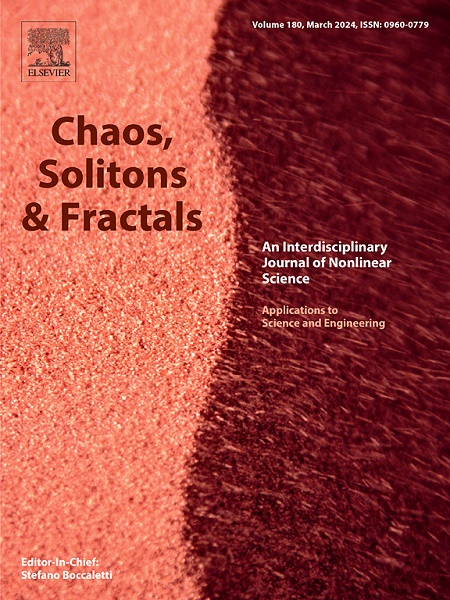液晶弹性体薄束在热板上的自攻
IF 5.6
1区 数学
Q1 MATHEMATICS, INTERDISCIPLINARY APPLICATIONS
引用次数: 0
摘要
热驱动自振荡系统能够从环境中吸收热量来维持自身的运动,因此在信号处理、机器人和能量采集器领域有着广泛的应用。现有的热驱动自振荡系统总是与热表面接触或处于非接触式热源的温度场中,这使得难以快速散热并限制了高频振荡的产生。通过与热板的间歇接触,实验设计了一种自攻液晶弹性体(LCE)薄束。在现有成熟的动态LCE模型的基础上,建立了热驱动自攻LCE梁的理论模型,阐明了自攻LCE梁的机理。数值计算表明,该系统存在静态模式和自攻模式两种运动模式,与实验结果一致。LCE光束通过吸收热板的热能来补偿其运动过程中的阻尼耗散,从而保持其自攻。此外,还详细研究了几个关键参数对自攻振幅和频率的影响。特别是自攻频率超过7hz,这是由于接触热板时热量吸收快,空气中的热量散失快造成的。该自攻系统具有振荡频率高、结构简单、调节灵活、稳定性好等优点,在热传感器、能量捕获、微型机器人等实际应用场景中具有潜在的应用前景。本文章由计算机程序翻译,如有差异,请以英文原文为准。
Self-tapping of a liquid crystal elastomer thin beam above a hot plate
Thermally-driven self-oscillating systems are able to absorb heat from the environment to maintain their own motion, and therefore have a wide range of applications in the fields of signal processing, robotics and energy harvester. Existing thermally-driven self-oscillating systems are always in contact with a hot surface or in a temperature field with a non-contacting heat source, which makes it difficult to dissipate heat quickly and limits the generation of high-frequency oscillations. By introducing intermittent contact with a hot plate, a self-tapping liquid crystal elastomer (LCE) thin beam is experimentally designed in this paper. Based on the existing mature dynamic LCE model, the theoretical model of the thermally-driven self-tapping LCE beam is established, and the mechanism of self-tapping is elucidated. Numerical calculations show that the system exists in two modes of motion: static mode and self-tapping mode, which is consistent with the experimental results. The LCE beam maintains its self-tapping by absorbing the thermal energy from the hot plate to compensate for the damping dissipation during its motion. In addition, the effects of several key parameters on the amplitude and frequency of self-tapping are investigated in detail. Specially, the frequency of self-tapping exceeds 7 Hz, originating from the rapid heat absorption when contacting the hot plate and the rapid heat dissipation in air. This self-tapping system has the advantages of high oscillation frequency, simple structure, flexible regulation, and stability, and has potential applications in practical application scenarios such as thermal sensors, energy capture and micro-robotics.
求助全文
通过发布文献求助,成功后即可免费获取论文全文。
去求助
来源期刊

Chaos Solitons & Fractals
物理-数学跨学科应用
CiteScore
13.20
自引率
10.30%
发文量
1087
审稿时长
9 months
期刊介绍:
Chaos, Solitons & Fractals strives to establish itself as a premier journal in the interdisciplinary realm of Nonlinear Science, Non-equilibrium, and Complex Phenomena. It welcomes submissions covering a broad spectrum of topics within this field, including dynamics, non-equilibrium processes in physics, chemistry, and geophysics, complex matter and networks, mathematical models, computational biology, applications to quantum and mesoscopic phenomena, fluctuations and random processes, self-organization, and social phenomena.
 求助内容:
求助内容: 应助结果提醒方式:
应助结果提醒方式:


